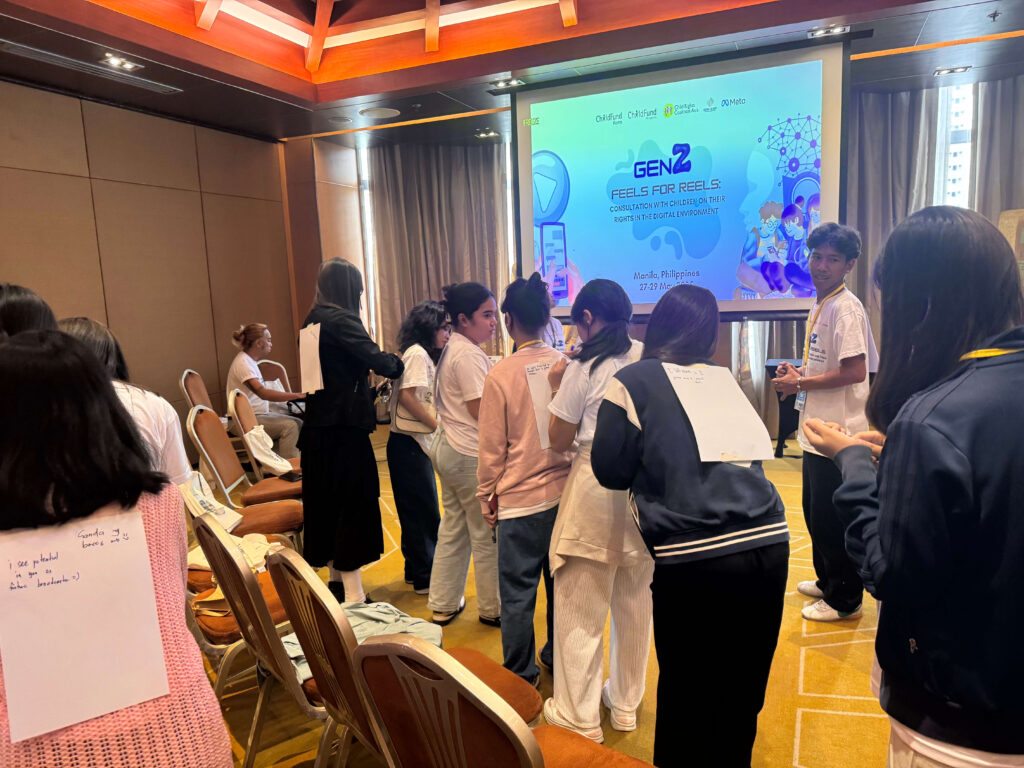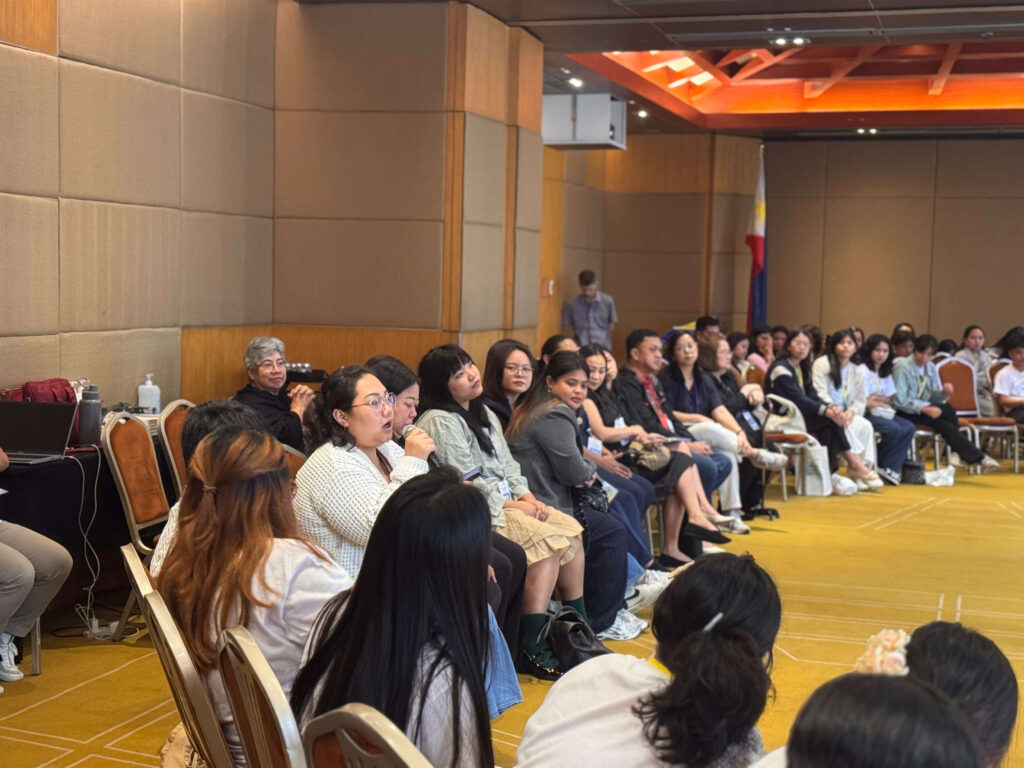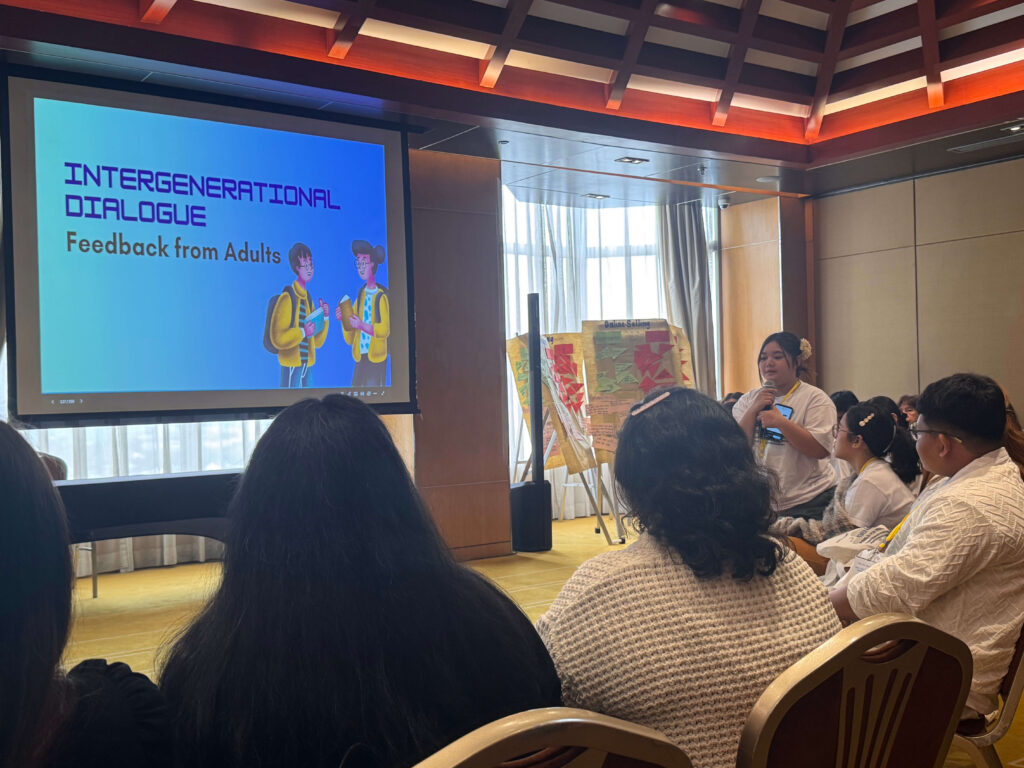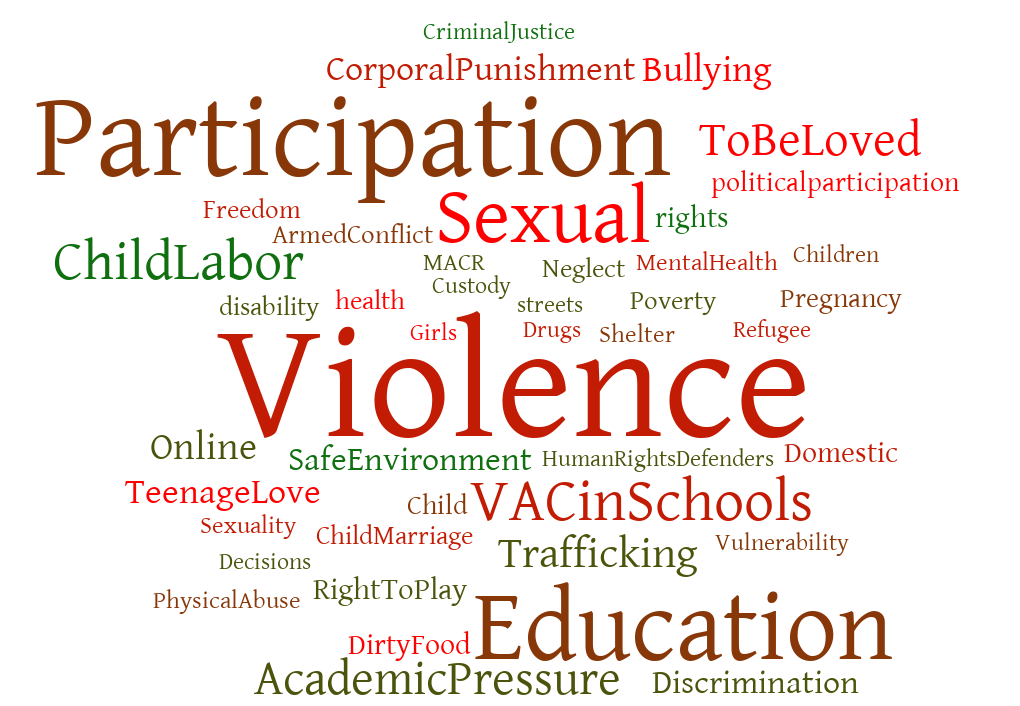Child Rights Coalition Asia (CRC Asia), ChildFund Philippines, ChildFund Korea, and Meta, in partnership with the Down to Zero Alliance in the Philippines, held a three-day children’s consultation on children’s digital rights last May 27-May 29, 2025.
It aimed to empower children in co-creating a digital world where children are not only safe, but also empowered to participate, express themselves, and access accurate information. Through interactive workshops, children shared their lived experiences on privacy, misinformation, freedom of expression, and emerging online risks — proving that young voices must be central in shaping digital spaces that impact their lives.
Gen Z’s App-etite: Download or Delete?
Children download apps mostly based on trends, curiosity, and peer influence but they also weigh risks like privacy.
“We consider the popularity of the app, particularly online games, before deciding to download it,” said one child participant.
Others mentioned how personal interests and needs also shape their decision. Sometimes children look for platforms to explore or “hang out” in, making these platforms an important space for play and socialization.
But they’re quick to delete apps that feel unsafe or no longer serve their needs. It is not just tech-savviness – children are aware about the spaces that make them safe and empowered.
Parental Control: A Double-Edged Sword
Children expressed mixed feelings about parental controls. While they appreciate the guidance, others feel stifled. As with anything, moderation and context is important.
“Parental control can be acceptable depending on how it’s implemented and the specific context, moderation and adaptability to each individual’s situation are key,” said one group of participants.
Red Flags on the Feed: Gen Z’s Call for Better and Verified Information
Fake news
Children have the right to access information and adults have a duty to ensure that this information is safe and understandable. To further probe their experiences, the children were asked to list down red flags they see on social media and what should be done about them.
The children talked about the widespread issue of misinformation, especially about education, health, and disasters. One participant shared, “There’s fake news on the introduction of “Grade 13” in the Philippines with misleading links,” said one of the participants. These news usually use sensational headlines that grab attention but contain misinformation.
The children note that these fake news are even more prominent during disasters and elections, causing confusion and harm. Health information was flagged as well because it can lead to self diagnosis instead of getting professional help.
Children also flagged other types of fake news, such as fabricated showbiz issues. This includes false celebrity illnesses and deaths that cause distress to children, especially when they later discover that the information is fake. Children flagged this because of their empathy, noting that these can have a negative emotional impact on people.
Other red flags they noted are related to OSAEC (Online Sexual Abuse and Exploitation of Children) such as the normalization of sexual content and sharing of sensitive materials on social media. “It’s alarming that these issues are often ignored, silencing the affected children and robbing them of their rights.”
Proliferation of Scams
Aside from misinformation, children also identified scams as red flags online. Recently, AI-generated posts that offer fake giveaways, job opportunities, and investment schemes with exaggerated returns are proliferating online.
There are also a lot of clickbait posts with malicious links that redirect users to suspicious websites or unrelated apps such as e-commerce sites. This can potentially have hidden charges or drain e-wallet accounts.
Who’s Accountable?
Children called on agencies like the Department of Education (DepEd), Department of Health (DOH), NBI, PNP, and even NGOs, to act swiftly against misinformation and scams.
They also challenged influencers to use their platforms responsibly because their content can sway children. For example, there are increasing gambling promotions in influencer’s content, sneakily sandwiched in their videos. They said that these influencers should take into account the vulnerability of their audience, especially the children and youth.
One participant raised that checking for the blue checkmark indicating that an account is verified isn’t enough anymore. “It’s easy to get a verified blue checkmark on Facebook through payment. So this does not always guarantee credibility. We should think before we click.”
Are Children Truly Free to Express Themselves Online?
Article 13 of the UN Convention on the Rights of the Child affirms children’s right to express themselves in different ways, whether verbal, written, or creative, as long as their expression does not hurt others.
In the past years, children and young people continue to express themselves online as content creators, commenters, and sharers on various topics like culture, hobbies, art, gender, politics, and advocacy. For some, the online space is a safer place to express their authentic selves, free from societal judgement. But for others, this freedom remains out of reach.
When asked about how safe they are in expressing gender, culture, advocacies, and political opinions online, children have varied insights.
-
- On Gender: While there is growing freedom of expression and continued development, some lapses in sharing remain. Posts about women’s rights or LGBTQ+ issues often receive backlash from religious groups.
- On Culture: Children feel unsafe expressing their culture, citing instances of regionalism. People use the words “Bisaya” and “Mangyan” derogatorily, implying ignorance. Some children from Visayas and Mindanao also get made fun of for the way they speak, making them hesitant to express themselves in their language.
- On Politics: This category fared the lowest rating among all categories and in all groups of children, with most citing clashes in views with adults, age-based discrimination, and negative labelling. Some shared experiences of being told they lacked knowledge or were too young to have valid opinions, especially since they were not yet voters.
- On Advocacy: Some children who use social media for advocacy get misunderstood or judged. For example, some children advocating for sex education earn backlash for being “inappropriate” or “indecent”.
Given these experiences, children also gave suggestions on what social media companies like Meta can do to make their platforms a more conducive space for children to authentically express themselves:
- More accessible and user-friendly reporting tools
- Improved content moderation, such as detecting harmful language before a post is published. If ignored, Meta should suspend or block the account to prevent harm.
- Enhanced vocabulary of Meta’s filters to better detect context-specific hate speech
- Strengthened account verification process to prevent creation of dummy or poser accounts
- System that educate users when removing harmful content rather than banning them without explanation
New Frontiers, New Risks
From AI and kidfluencers to online selling and the metaverse, children see both opportunities and dangers in emerging digital trends. Key concerns include the following:
| Opportunities | Risks | Recommendations | |
| Artificial Intelligence (generative AI and other forms) |
|
|
|
| Sharenting
(Parents sharing about their kids online) |
|
|
|
| Kidfluencers
(Kid influencers) |
|
|
|
| Online Selling |
|
|
|
| Gaming and Metaverse |
|
|
|
Their message? Design systems with child safety, consent, and digital literacy at the core.
Bridging Generations for a Safer Internet
The consultation concluded with an intergenerational dialogue featuring government agencies, civil society, tech companies, and, most importantly, children. Representatives from different stakeholders such as the Council for the Welfare of Children (CWC), The National Privacy Commission (NPC), PNP-WCPC, Meta, Canva, PLDT-Smart, Child Rights Network (CRN), Save the Children, World Vision were present.
The children were able to share their key messages and recommendations in various creative ways to the plenary. Afterwards, there was a feedback session where adult participants were able to react and ask questions – and vice versa. The conversation laid the groundwork for shared responsibility in building a digital world where children aren’t just protected but truly empowered.
Children are not only users of the digital world. They are its builders, critics, and future leaders. It’s time we move from scrolling past their voices – to making them the headline.








